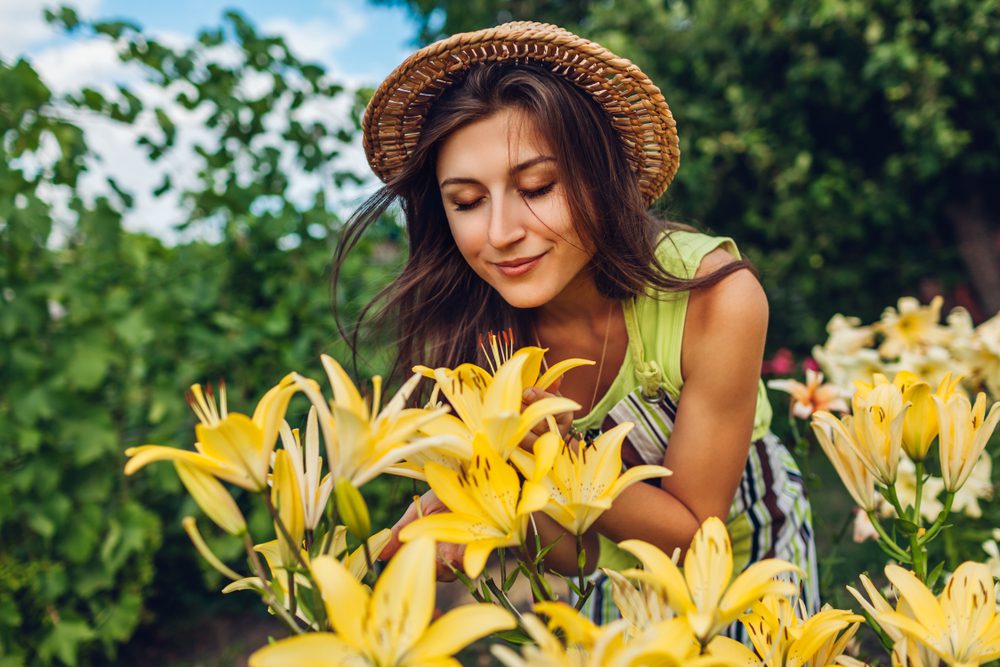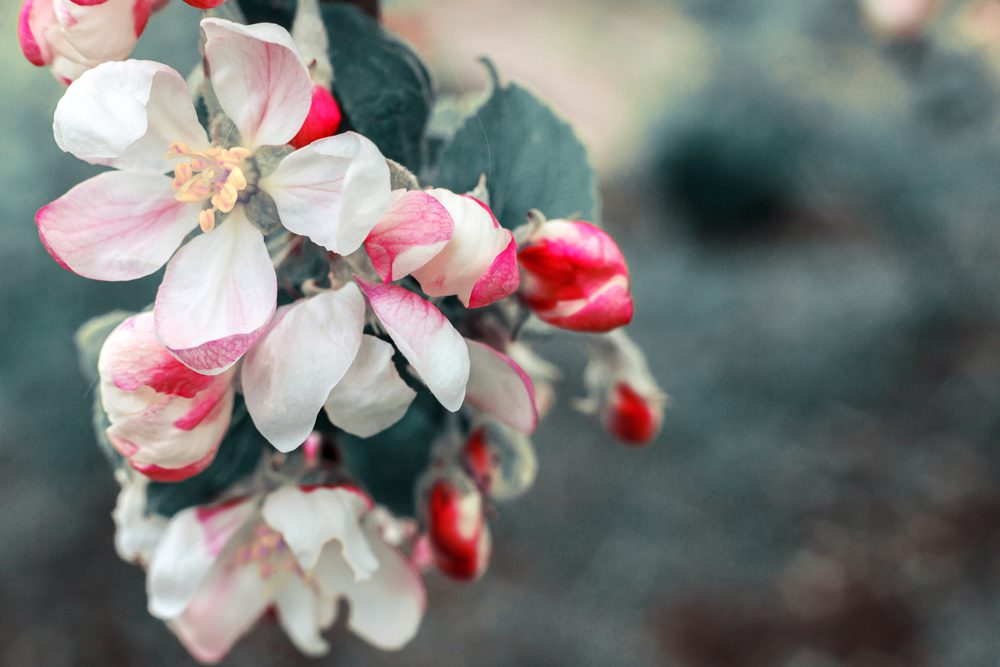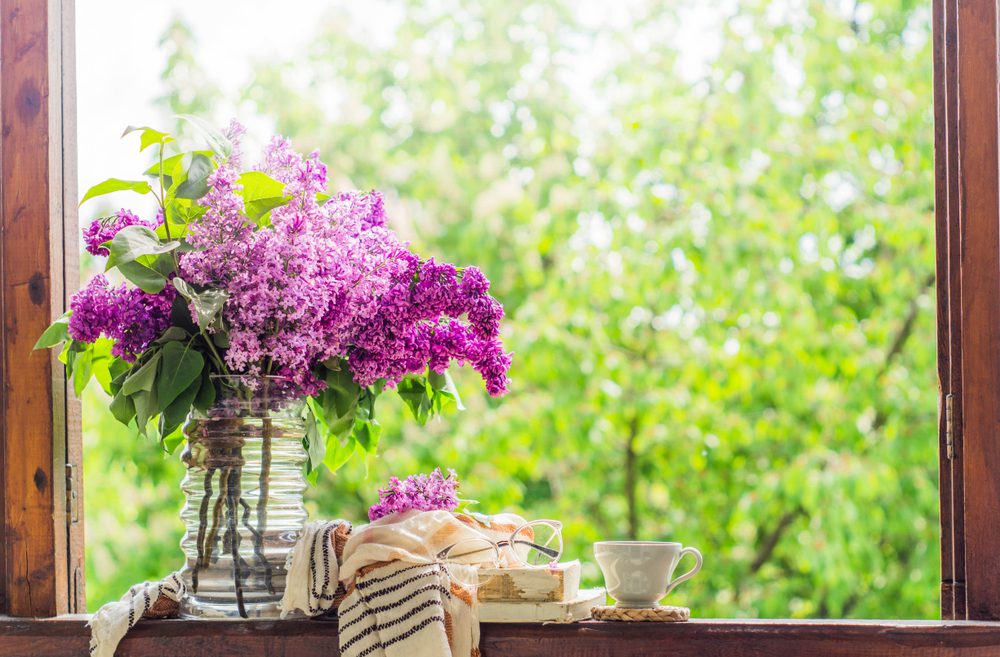A fragrant garden will not only continuously appeal to all of your senses, but it will also offer constant beauty at different times of the day, the whole year.
When it comes to fragrance, there are so many options, that you’ve got nothing left but to choose all and mix them up as you would do in a fruit salad.
According to Daniel McCurry, the owner of Father Nature Landscapes, “fragrance is the one that welcomes you and your own guests into the garden.
It’s also the one that brings to life other senses, which would only make you more aware and even help in remembering all the special moments.” Plus, on a more practical side, the plants that are very fragrant will also attract moths, bees, butterflies, and many other insects. Here are a couple of ways through which you can get the garden of your dreams:
Have a fragrant garden in any season
Do you want to know the secret of having a beautiful and fragrant garden? It all relies on the way you choose the flowers, starting from the different times they bloom throughout the year.
Luckily, there is a myriad of planting options out there, so from this point of view, you’re safe. According to McCurry, it is highly important to “learn more about the local palette on the go.
This way, you’ll be more familiar with what you can choose, depending on the area you live in. Once you know which plants to pick in order to have a fragrant garden all year, you can start your own fragrance calendar!”

Add some night-scented plants for a proper evening atmosphere
But properly organizing which flowers to pick, depending on the season, isn’t the only thing you should think about. Why not have all kinds of fragrances at different times of the day, too?
Because there are plenty of night-scented plants that you’d absolutely love for sure, and they would also add a little bit of dramatic shadows, luminous color and shimmer, too.
According to Todd Haiman, the owner of Todd Haiman Landscape Design, “a huge variety of fragrant plants that are associated with moonlight gardens have white flowers,” and we can take as an example the night-scented phlox, moonflower, star jasmine, and gardenia.
Decide on the plant’s position carefully
When you’re deciding on which plant varieties to purchase, you should carefully consider where you can put them, so you can boost their fragrance as much as possible.
While there are some perfumes that might take some time to develop, so does some flowers, like chocolate cosmos, as they might appear even more appealing from a distance.
For example, some aromatic plants will only release their oils when they are rubbed, like mint. That’s why, when it comes to this type of plant, you should think of a place that would provide easy access to the plants and they can be rubbed against something.

Avoid competing scents
When you’re planning your garden, it’s important to also think about the proximity of your scented plants. “You really don’t want strong scents to compete with one another, especially if they’re not complementary.” according to Sandra Nanka, the owner of Mudbrick Herb Cottage.
As she added, it’s also important to be careful with the outdoor entertaining areas, and where they might be dining or sitting, because their scents might be too strong and end up boring you.
Even so, mixing all sorts of fragranced plants can guarantee a very unique perfume, so start combining those scents to see what you can get!
Plan around different garden features
Plant the fragrant garden of your dreams around key design aspects. It could be seating areas, water feature ideas, or even garden sculptures.
Whatever you might choose, they will definitely enhance the entire sensory experience! When asked about this matter, Smith said that “a common design choice loved by many is a pathway around a central feature, which can be anything, from a bench to a big portion of plants, or even a water feature.”
For example, a fountain is a wonderful way to add a bit of sound, without removing any of the functions and purpose of the fragrant garden.
Think beyond flowers
Of course, when we say fragrant, we instantly think of flowers. But what about the plants that emit beautifully smelling aromas? Try to broaden your horizons as much as possible, in order to include other types of plants, too.
For example, there are some fruit trees, like apples and pears, that have a very delicate fragrance when they bloom, or when the fruit is ripe. Also, lots of annuals and perennials have very attractive seedpods that will give off a wonderful aroma when they’re squeezed.
But what about the vanilla plants, cinnamon trees, or even sassafras roots, as their roots can also release a very pleasing fragrance?

Add scent everywhere with climbing plants
The wonderful climbing plants like honeysuckle, jasmine, and roses that brighten up our garden have another perk: they have a charming fragrance.
You can easily fill the vertical plane with one or two scented plants, as it will not only provide a feast for the sense but will also increase the experience.
If you want to start growing fragrant climbing plants, all it takes is to decide on a support structure in place. There are various options that are both visual and practical, so you can easily grow a wide variety of climbers, both on your garden walls and fences.
Consider adding some containers for maximum effect
By adding some containers, you will only increase the experience of fragrance to a higher level, because the plants will be raised from the ground.
And if you ask us, we would strongly recommend you to go for aromatic plants, as they are slightly more engaged when they are planted in containers, because they’re much easier to reach.
But there’s another benefit to it: you will notice more quickly when unwanted and invasive species are attacking your plants, such as mint and lemon balm. Plus, you can move the plants that are more vulnerable during cold seasons inside.
Don’t forget about aromatic herbs, too!
Speaking of aromatic herbs, we would probably need to focus on a whole new article on them, because there are so many things that need to be said. But for now, let’s just say that having herbs in your garden will be nothing but bliss.
Before deciding on which herbs to choose, make sure you have enough space for them, as they release their aroma when you simply brush past them.
You can easily put them closer to entryways and patios because you can easily enjoy their smell as you come and go. However, some herbs can also deter pests, and some are even greater when it comes to mosquitos, such as lavender, thyme, rosemary, and lemongrass.
If you enjoyed reading this article, we also recommend reading: How to Build a DIY Fire Pit: 5 Easy Steps
YOUR ARTICLE IS VERY INFORMATIVE. I APPRECIATE AROMATIC FLOWERS ETC. BUT I LIVE ABOVE A GARAGE AND ONLY HAVE THE FLOOR OF A PORCH OUTSIDE. I LIKE THE IDEA OF CONTAINERS FOR PLANTING FLOWERS. I CAN DO THIS UP HERE AS I HAVE SOME ALREADY IN CONTAINERS. HOW DO I KNOW WHICH FLOWERS NEED DRAINAGE HOLES AND WHICH ONES THRIVE W/O. THANK YOU FOR READING THIS AND RESPONDING,MEGAN